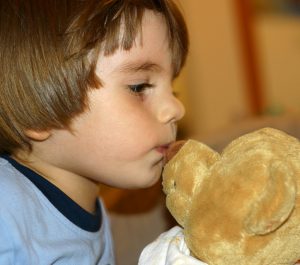Does your child have a favorite blanket or toy that they love more than anything, even an identical, newer, cleaner version of the same object? Anyone familiar with Owen by Kevin Henkes or Knuffle Bunny by Mo Willems knows that this phenomenon is quite real and experienced by many young ones.
But how about taking it a bit further, past cute and cuddly: what about when kids give everyday objects and places personalities and emotions? You may have seen it in nursery rhymes, like when the besotted dish ran away with the spoon. When you’re walking down the street do your kid see the faces in cars or fire hydrants? Do you?
Point of View
There are some great children’s stories actually told from the point of view of objects. The most famous example is probably Shel Silverstein’s The Giving Tree. Has another tree been cried over more than this endlessly generous tree?
The most recent book is School’s First Day of School, by Adam Rex and illustrated by Christian Robinson. School’s nervous about the Big Day. Are kids going to be kind? Will he make friends? He confides in his caregiver, the school janitor. I Love You, Blue Kangaroo is also great story featuring a worried, nervous narrator.
The Day the Crayons Quit by Drew Daywalt and illustrated by Oliver Jeffers, features a large cast--a full box-worth--of crayons with personalities ranging from overworked to jealous. The Obstinate Pen is another writing instrument with a strong personality. In this book, you can clearly see who has control over the situation (spoiler alert: not the humans!).
What Does It Mean?
Why do kids project these feelings on objects? In The Guardian article "Why Children Become So Attached to Toys and Comfortable Blankets,", opens a new window scientists ascertain that kids believe their special objects are not only physical but actually contain a sort of life energy, an intangible quality, that cannot be replaced by a copy.
Scholastic Books's article, "Ages and Stages,", opens a new window attributes it to “magical thinking.” Projecting feelings onto objects is a vital part of dramatic play, during which a child is able to safely learn the difference between “real” and “pretend” and learn “to gain control over a disturbing situation and begin to develop a sense of independence.”
So, have no fear, it’s very likely a healthy and normal part of development. It’s definitely a great excuse to nestle into your childhood blanket, grab one of these storybooks, and appreciate the magic that surrounds you everyday.
What object was comforting to you as a child? What is your child's favorite object? Share your memories and comments with us.



Add a comment to: Stubborn Pens and Nervous Schools